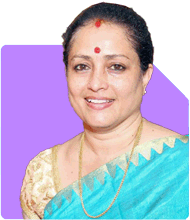44yo Abroad Worker Seeking Investment Advice with Rs.50k Monthly - Is Portfolio Okay?
Ramalingam Kalirajan |6568 Answers |Ask -Follow
Mutual Funds, Financial Planning Expert - Answered on Jul 16, 2024
He has an MBA in finance from the University of Madras and is a certified financial planner.
He is the director and chief financial planner at Holistic Investment, a Chennai-based firm that offers financial planning and wealth management advice.... more

Hello sir, I am 44 year old male, working abroad, but here job security is not guaranteed. I can allocate Rs.50k monthly for MF or SIP investment. I feel ashamed to tell you this, that without consulting I had already invested in:- 1) Nippon India Growth Fund direct growth 50k 2) JM aggressive hybrid fund direct growth 50k 3) ICICI prudential balanced adv dire growth 50k 4) Quant mid cap fund direct growth 50k SIP's - 2500 per month 1) Nippon India multi cap Fund direct growth 2) SBI PSU direct plan growth 3) Quant small cap fund direct plan growth 4) ICICI prudential BHARAT 22 FOF direct growth Sir, Please advise whether this above plan is okay to continue or not also, please advise how to go ahead with 50k monthly allocation for investments. Benign regards Vinu George
Your current investments include:
Nippon India Growth Fund direct growth: Rs. 50k
JM Aggressive Hybrid Fund direct growth: Rs. 50k
ICICI Prudential Balanced Adv direct growth: Rs. 50k
Quant Mid Cap Fund direct growth: Rs. 50k
SIPs of Rs. 2,500 per month in:
Nippon India Multi Cap Fund direct growth
SBI PSU direct plan growth
Quant Small Cap Fund direct plan growth
ICICI Prudential BHARAT 22 FOF direct growth
Assessment of Current Investments
Direct funds can be beneficial due to lower costs, but managing them without professional guidance can be challenging.
Advantages of Actively Managed Funds
Expert Management: Actively managed funds have professional fund managers.
Better Returns: They can outperform index funds due to active management.
Flexibility: Fund managers can adjust portfolios based on market conditions.
Disadvantages of Direct Funds
Lack of Guidance: Investing in direct funds without a Certified Financial Planner can lead to suboptimal decisions.
Time-Consuming: Monitoring and managing these funds requires time and expertise.
Suggested Portfolio Allocation
To maximize returns and manage risk, consider the following:
Equity Funds
Allocate 60% to equity funds: These funds offer high growth potential. They are ideal for long-term goals like retirement.
Debt Funds
Allocate 30% to debt funds: Debt funds provide stability and reduce overall portfolio risk.
Diversified Funds
Allocate 10% to diversified funds: These funds invest across various sectors, balancing risk and returns.
Monthly Allocation Plan
You can invest Rs. 50k monthly. Here’s a suggested allocation:
Equity SIPs: Rs. 30k in a mix of large-cap, mid-cap, and multi-cap funds.
Debt SIPs: Rs. 15k in high-quality debt funds.
Diversified SIPs: Rs. 5k in diversified funds.
Professional Guidance
Seek advice from a Certified Financial Planner. They can help you:
Optimize Your Portfolio: Ensure a balanced and diversified portfolio.
Regular Reviews: Regularly review and adjust your investments based on performance and goals.
Final Insights
Your current investments need optimization. Focus on actively managed funds for better returns. Diversify your portfolio with a mix of equity, debt, and diversified funds. Consult a Certified Financial Planner for tailored advice.
Best Regards,
K. Ramalingam, MBA, CFP,
Chief Financial Planner,
www.holisticinvestment.in
You may like to see similar questions and answers below
Ramalingam Kalirajan |6568 Answers |Ask -Follow
Mutual Funds, Financial Planning Expert - Answered on Jun 25, 2024
Ramalingam Kalirajan |6568 Answers |Ask -Follow
Mutual Funds, Financial Planning Expert - Answered on Jul 12, 2024
Ramalingam Kalirajan |6568 Answers |Ask -Follow
Mutual Funds, Financial Planning Expert - Answered on Jun 19, 2024
Ramalingam Kalirajan |6568 Answers |Ask -Follow
Mutual Funds, Financial Planning Expert - Answered on Jul 19, 2024
Patrick Dsouza |824 Answers |Ask -Follow
CAT, XAT, CMAT, CET Expert - Answered on Oct 11, 2024
Patrick Dsouza |824 Answers |Ask -Follow
CAT, XAT, CMAT, CET Expert - Answered on Oct 11, 2024
Dr Karthiyayini Mahadevan |1106 Answers |Ask -Follow
General Physician - Answered on Oct 11, 2024
Milind Vadjikar |379 Answers |Ask -Follow
Insurance, Stocks, MF, PF Expert - Answered on Oct 11, 2024
Mayank Chandel |1915 Answers |Ask -Follow
IIT-JEE, NEET-UG, SAT, CLAT, CA, CS Exam Expert - Answered on Oct 11, 2024
Milind Vadjikar |379 Answers |Ask -Follow
Insurance, Stocks, MF, PF Expert - Answered on Oct 11, 2024
Milind Vadjikar |379 Answers |Ask -Follow
Insurance, Stocks, MF, PF Expert - Answered on Oct 11, 2024
Ramalingam Kalirajan |6568 Answers |Ask -Follow
Mutual Funds, Financial Planning Expert - Answered on Oct 11, 2024
Ramalingam Kalirajan |6568 Answers |Ask -Follow
Mutual Funds, Financial Planning Expert - Answered on Oct 11, 2024
Ramalingam Kalirajan |6568 Answers |Ask -Follow
Mutual Funds, Financial Planning Expert - Answered on Oct 11, 2024





















